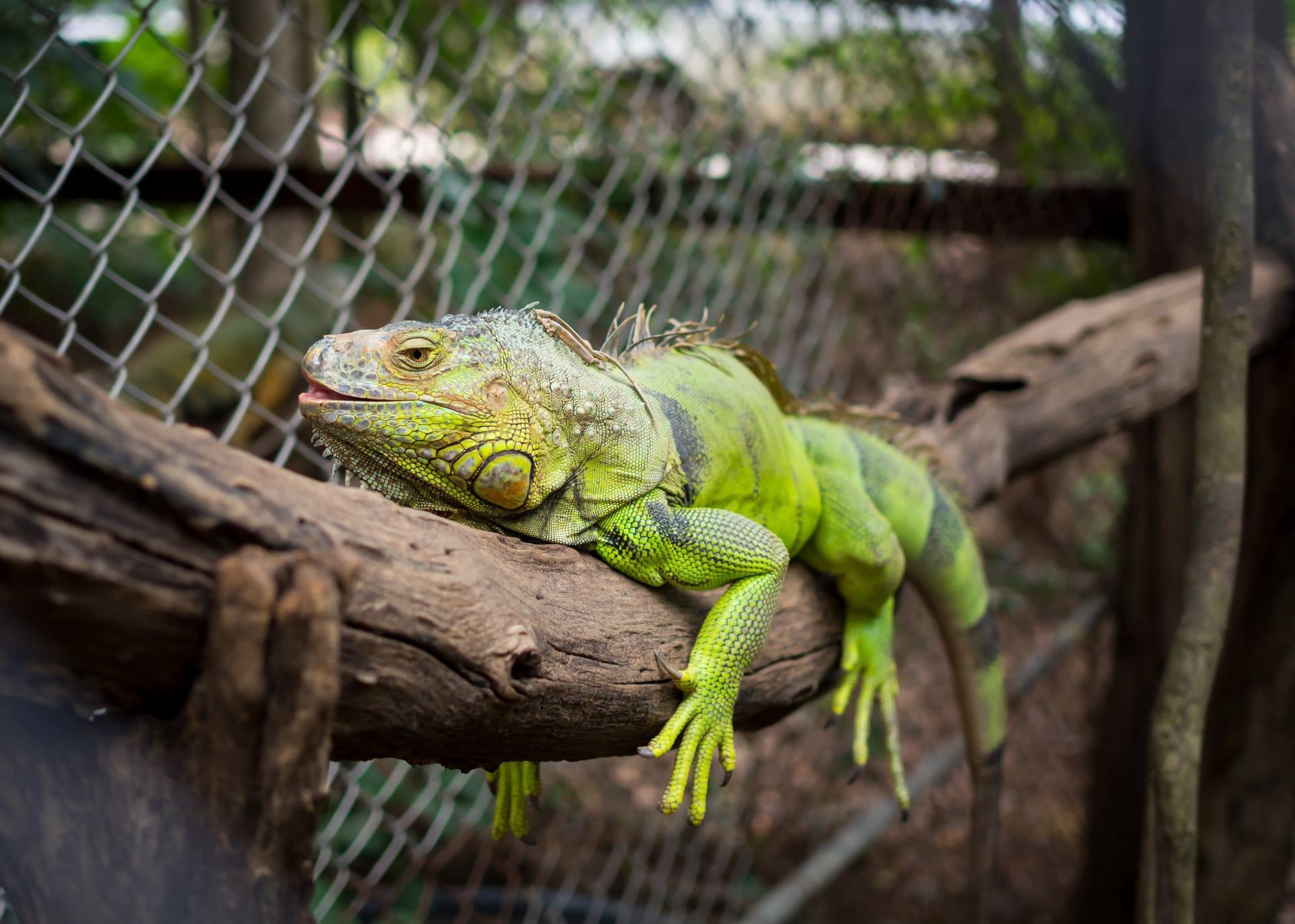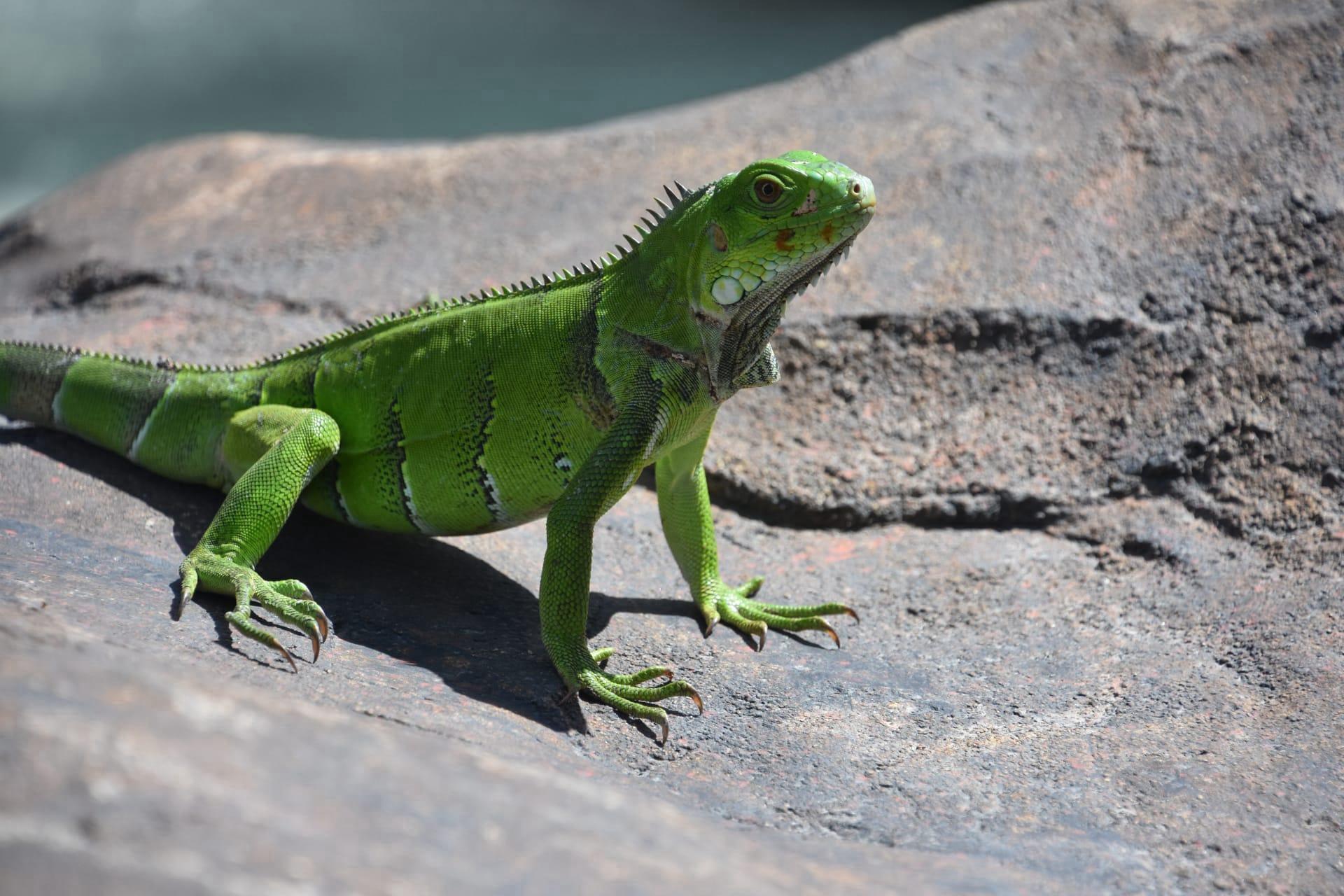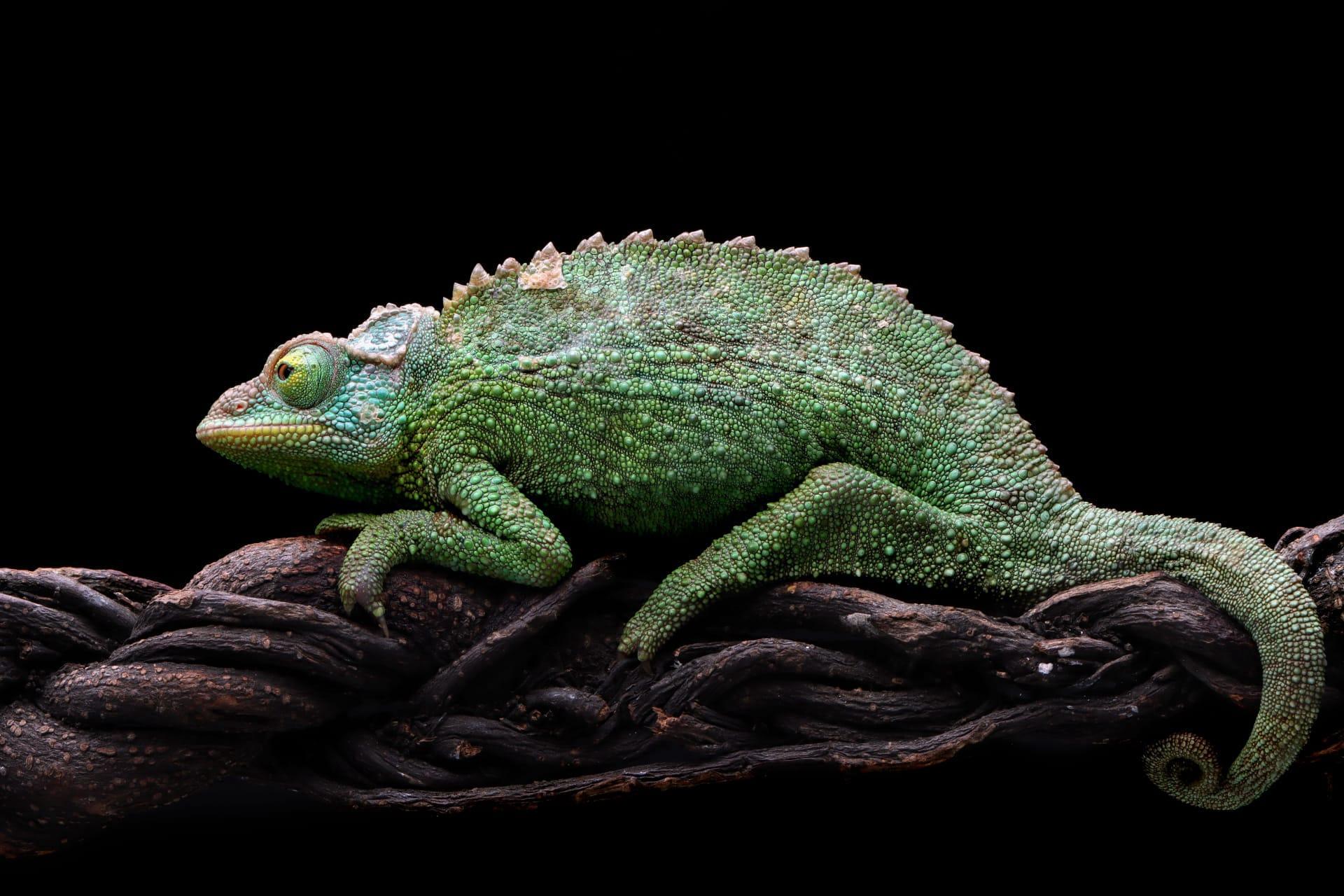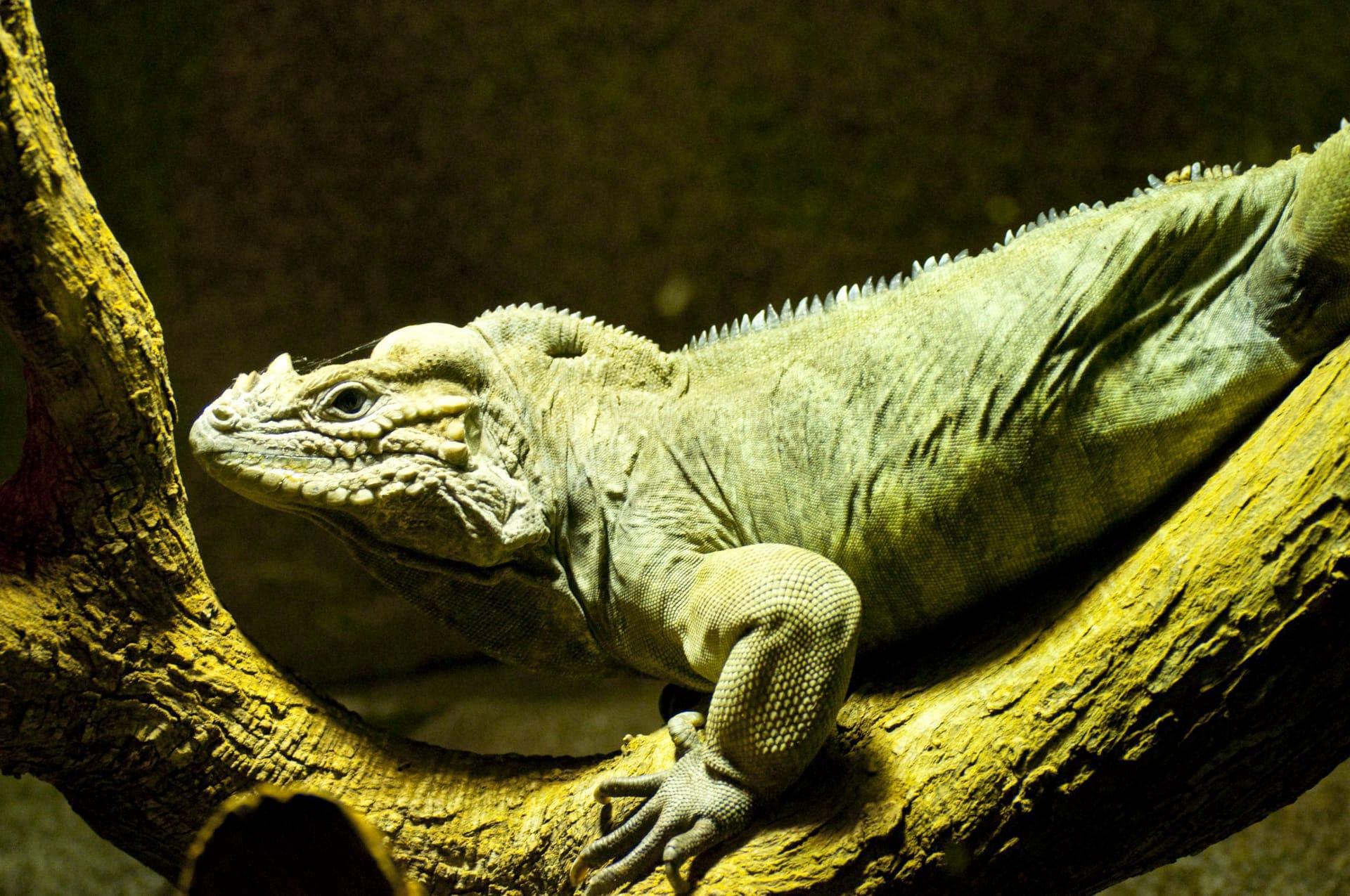Green Iguana Trivia
- Home /
- Trivia Question /
- Animal /
- Green Iguana Trivia
1
Question: How long can green iguanas grow, and what is their lifespan in the wild and in captivity?
Answer: Green iguanas are among the largest lizards in the Americas, with young iguanas typically measuring around 6 to 7 inches long. However, they grow rapidly and can reach lengths of 5 to 6 feet, including their tail, as adults. In the wild, their lifespan ranges from 10 to 12 years, but in captivity, with proper care, they can live up to 20 years or more. Their size and longevity are significant factors to consider for anyone thinking of keeping them as pets.
Question: What do green iguanas eat, and how does their diet change as they grow?
Answer: Green iguanas are primarily herbivorous, meaning they eat mostly plants. Juvenile iguanas often consume a higher percentage of fruits and vegetables, while adults prefer leafy greens like kale, dandelions, and mustard greens. They require a varied diet rich in calcium for good health. It's crucial to avoid feeding them animal protein, as it can lead to serious health issues like kidney failure. This dietary shift from more diverse food in youth to primarily leafy greens in adulthood is vital for their long-term health.

2
Question: Do green iguanas make good pets for beginners?
Answer: Contrary to popular belief, green iguanas are not ideal pets for beginners. They require specific environmental conditions, such as controlled temperature and humidity, UVB lighting, and a spacious enclosure. Their diet needs careful management, and they can be quite territorial. Handling them requires patience and understanding of their behavior, as they can become stressed or aggressive if not treated properly. Prospective pet owners should thoroughly research and prepare for the commitment required to care for these exotic animals.
Question: Can green iguanas live happily in smaller enclosures?
Answer: A common misconception is that green iguanas can adapt to small spaces. However, these are large reptiles that need ample space to move, climb, and bask. An adult green iguana requires an enclosure that's at least 6 feet tall, 6 feet long, and 3 feet wide. Inadequate space can lead to health issues like muscle weakness, stress, and aggressive behavior. It's crucial to provide an environment that mimics their natural habitat to ensure their well-being.

3
Question: Are green iguanas solitary creatures, or do they prefer company?
Answer: Green iguanas are typically solitary animals, especially in the wild. They come together during the breeding season but otherwise prefer to be alone. In captivity, housing multiple iguanas together can lead to stress, competition for resources, and even physical harm. It's generally best to keep them individually to ensure their health and safety, except under controlled breeding conditions or with professional supervision.
Question: How do green iguanas communicate with each other and their environment?
Answer: Green iguanas have a unique way of communicating. They use a combination of visual signals, such as head bobbing, dewlap extension (flap of skin under the chin), and body posture, to convey messages. These signals can indicate territoriality, readiness to mate, or aggression. Additionally, they use tactile communication during courtship and have an excellent sense of hearing and smell to interact with their environment. Understanding these behaviors is essential for anyone observing or caring for these fascinating reptiles.

4
Question: What role do green iguanas play in their natural ecosystem?
Answer: In their natural habitats, green iguanas play a crucial role in the ecosystem. As herbivores, they help control the growth of vegetation, and their feces act as a natural fertilizer, aiding in plant regeneration. They are also prey for larger animals, contributing to the food chain. Furthermore, their habit of digging burrows helps in soil aeration, which is beneficial for plant growth. This shows how vital green iguanas are in maintaining ecological balance.
Question: Can green iguanas change color, and if so, why?
Answer: Green iguanas can change color, but not as dramatically as some other reptiles like chameleons. Their color changes are usually subtle and relate to temperature regulation, mood, health, or social signaling. For example, they may turn darker when basking to absorb more heat or lighter to reflect sunlight. Stress, illness, or environmental factors can also affect their coloration. This ability to change color, albeit limited, is a fascinating aspect of their biology.

5
Question: How do green iguanas regulate their body temperature?
Answer: Green iguanas are ectothermic, meaning they rely on external heat sources to regulate their body temperature. They bask in the sun to warm up and seek shade or cooler areas to cool down. In captivity, providing a gradient of temperature within their enclosure is crucial, with a basking spot that reaches around 95°F and a cooler area around 75°F to 85°F. This thermal regulation is essential for their digestion and overall health.
Question: Are green iguanas capable of swimming, and how do they use this ability in the wild?
Answer: Yes, green iguanas are excellent swimmers. They have powerful tails that propel them through water, and they can hold their breath for extended periods. In the wild, they use this ability to escape predators by diving into water and swimming away. They are also known to cross rivers and small water bodies in search of food or new territory. This swimming ability is an impressive adaptation that helps them survive in their natural habitat.